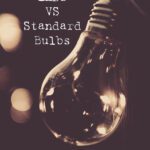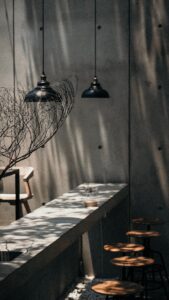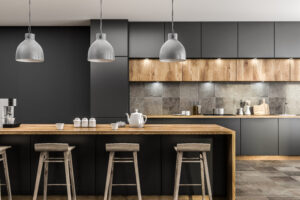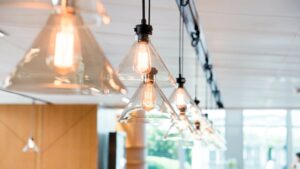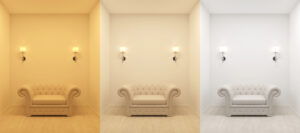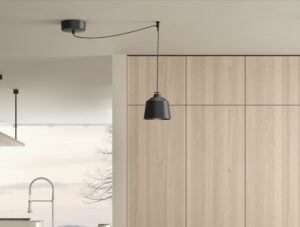LED vs. Standard Bulbs: Deciding What Type of Lighting is Best for Your Home
Deciding on the ideal type of light to use in your home can be a commitment. The design-savvy among us understand the transformative impact that lighting can bring to a space, but it can be difficult to anticipate which type of light source will best suit your space in advance of installation. When incandescent and fluorescent bulbs were the only options on the market, it was necessary to learn some design guidelines to approximate which type would be right for different spaces in the home. However, the recent arrival of LED light bulbs has made the process of customizing your lighting more simple, affordable, and energy-efficient.
We compared LED light bulbs to incandescent and fluorescent bulbs, finding a clear winner that would suit any number of spaces.
How do LED light bulbs differ from incandescent and fluorescent bulbs?
Energy Efficiency & Longevity
LED light bulbs are widely regarded as the most energy-efficient option currently on the market, using at least 75% less energy than traditional light bulbs and lasting up to 25 times longer. The average lifespan of an LED bulb is 25,000 hours – which is 9 years of 8-hour/day use. The average lifespan of an incandescent bulb, by comparison, is about 750 hours, and fluorescent bulbs last about 8,000 hours. So both the energy efficiency and the environmental impact of LED bulbs is significantly less than that of both incandescent and fluorescent bulbs. In fact, they are the most sustainable lighting solution on the market today.
Lifespan of LED bulbs vs. traditional light bulbs:
LED bulbs: 25,000 hours
Incandescent bulbs: 750 hours
Fluorescent bulb: 8,000 hours
Light Quality
You probably know that some light sources show colors more realistically than others. This is measured by the light source’s color rendering index, or CRI, which approximates the ability of a light source to show colors as realistically as they would appear in natural daylight. Natural daylight has a CRI of 100, so the higher the CRI the more natural colors will appear.
Incandescent bulbs have a CRI of ~95-100, meaning that they show colors almost exactly as they would appear in daylight. By contrast, most fluorescent bulbs have a CRI below 80, meaning that they render colors to look less natural. LED bulbs can be purchased with varying levels of CRI, with most LED bulbs at 80 CRI or above. It’s always a good idea to check the CRI of your light source, and be willing to pay a little more for bulbs that have a CRI of 90+.
Light Control
Unlike any other lighting source, LED light bulbs can be infinitely customizable. Smart home technology provides LED bulb users with the potential to change the brightness and color of their lighting to suit their needs. Many lighting control apps that integrate with smart home products like Google Home or Alexa provide the ability to program schedules that adjust a room’s lighting over the course of the day, whether to accommodate the shifting natural light the room receives or to suit a space’s changing functions.
Cost
Since the lifespan of an LED bulb is considerably longer than that of an incandescent or fluorescent light bulb, LED users will spend less money on their light bulbs over time. The programming possibilities of LEDs also mean that users can use the same bulbs in a wide range of spaces, adjusting their color and brightness settings to set whatever color or mood is needed.
Although light bulbs may seem like small purchases, their lifetime investment is potentially significant. In fact, users of incandescent light bulbs are likely to buy 25 times the number of light bulbs as those who use LED light bulbs.
How to decide what type of light is best for your space
Incandescent lights used to be the go-to light bulbs for domestic spaces, as they typically provide a warm light that makes spaces feel cozy and inviting. Fluorescent bulbs, meanwhile, have been used most prominently for workspaces, as they produce light that has a cool, bright quality that aids focus and wakefulness. Before the advent of LED technology it was not possible to adjust both the brightness and color temperature of a light source to suit the requirements of a given space. Both incandescent and fluorescent bulbs have a fixed brightness that can only be modified when connected to a dimmer.
LEDs are the first light bulb to allow control over brightness and color temperature, making them adaptable to the needs of any space. They are a great choice for those who would like the flexibility of experiencing different levels of light color and brightness, or those who want the option of frequently changing their lighting settings. LEDs can also easily move with you from one place to the next. If you move into a space with completely different lighting requirements than your previous one, you won’t have to buy a whole new set of light bulbs to achieve the atmosphere you’re looking for.
LED bulbs vs. traditional light bulbs: where are they typically used?
Incandescent bulbs (low, “warm” light): domestic spaces, restaurants
Fluorescent bulbs (cool, “bright” light): workspaces, task-oriented spaces
LED bulbs (customizable on smart IoT devices): can be adapted to all spaces
What type of light bulb is most popular in 2022?
Thanks to advanced technology, cost, energy efficiency, and low environmental impact of LED light bulbs, many are switching away from incandescent or fluorescent bulbs. In fact, LED light bulbs are quickly becoming the most popular type of light bulb on the market. Used equally in homes and commercial spaces, LEDs provide an all-in-one lighting solution at a lower cost than legacy alternatives. They have even been distributed door-to-door in cities across the United States as part of green initiatives that also provide cost savings.
While some continue to use incandescent and fluorescent light sources, the numerous advantages of LED light bulbs signal that their popularity will only continue to increase with time.
